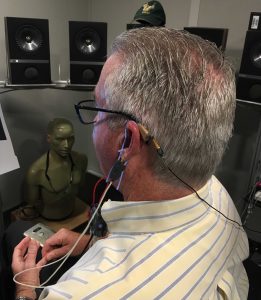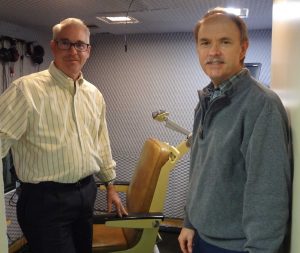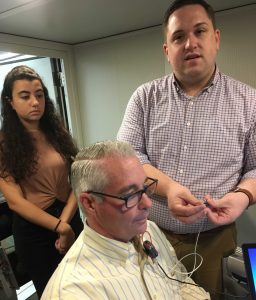Hyperacusis Device Holds Promise
The clinical trial has now started for a novel hyperacusis hybrid device which was developed by Dr. Craig Formby and Dr. David Eddins of the University of South Florida (see details below to participate in the clinical trial).
Dr. Formby presented at our Roadmap to a Cure event in Feb. 2015 during the Association of Research for Otolaryngology’s Mid-winter meeting. At the hyperacusis event, Dr. Formby heard stories of the very challenging lives faced by many with severe hyperacusis. He realized that the current treatment approaches do little to help those people determine how to manage everyday noise that can suddenly spike to over 100dB. He heard patient stories of significant setbacks caused by these sudden loud noises. He realized that a better sound limiting and treatment combination device could help these patients with severe noise-induced pain.
Dr. Formby partnered with Dr. Eddins and a device developer to formulate an NIH Grant for $235,965 (see details here). Bryan Pollard, President of Hyperacusis Research, was able to assist with the grant application by providing a supporting document explaining the critical need for such a volume limiting device and determining the level of interest via an online survey showing significant interest in the device. The grant was awarded in Aug. 2017.
Bryan met with Dr. Formby and Dr. Eddins (at the University of Iowa Tinnitus and Hyperacusis conference in 2016 for further collaboration on the design and plans for the device.
Bryan Pollard was able to get a preview of the device in Dr. Eddins’ lab at the Global Center for Hearing and Speech Research at the University of South Florida. Bryan was able to see the planned measurement setup and testing. Dr. Eddins, sitting in as a hyperacusis patient, wore the device with extra measurement equipment in a sound booth while audiologist Peter Hutchison executed setup tests. The software is very sophisticated and tunable so that patients are provided with a set of parameters personalized to their exact needs.
For example, the sound level to dampen loud sounds will be customized to a patient’s Loudness Discomfort Levels. Normally a patient knows only approximately how much sound reduction is achieved by ear plugs by the advertised Noise Reduction Ratings (NRR), which are known to be overstated. In this setup, exact measurements will be able to provide precise NRR’s so both patient and research team will know the reduction amount.
The observed device performance and rigorous plans for the clinical trial are impressive. This is truly a novel approach and exciting opportunity for an advanced clinical option for hyperacusis sufferers. The additional sound therapy component to the device will enable clinicians to test the value of maintaining a low level of sound in quiet situations while capping the noise level in loud environments.




